St. Albans: A village on the rise
St. Albans, Vt. was experiencing the kind of development in 1864 that would make it the busiest railroad hub in New England, a regional giant in the production and shipment of dairy products, and an ever more profitable manufacturing center turning out freight cars and heavy farm implements.
Founded under a charter issued in 1763, St. Albans was a forestland along pristine Lake Champlain when first settler Jesse Welden arrived around 1774. The former associate of Ethan, Ira and Levi Allen built a log cabin at St. Albans Bay. It would later serve as the site for the first town meeting.
Welden (described in various sources as either “mixed Native American and white” or 100 percent “sturdy English stock”) and his wife, Ruth, prospered here. They soon had a 550-acre farm and homestead on land that now encompasses the eastern side of South Main Street. At least six of their nine children came with them to live here.
Other homes soon dotted the 40 square miles of livable space in town and shops sprang up around a central green. A stagecoach raised dust along what would become Main Street. The park – which was to become part of St. Albans Raid lore — was cleared by early settlers and donated to the Village of St. Albans by John Smith, father of the Civil War governor, J. Gregory Smith, and Halloway Taylor. The green was formally dedicated in Taylor’s memory in 1870, some 30 years after his death. In 1887, J. Gregory Smith donated an ornate fountain to be placed there.
The Village of St. Albans was incorporated in 1859, just a year before the War Between the States began.
The St. Albans Academy building, as it is today, was just east of the park and next to land also donated by Smith and Taylor for a courthouse. The academy, the first organized public school building in the community, was just three years old at the time of the raid. Its students would long remember witnessing the calamity from the windows of what today is the Bliss Room of the St. Albans Historical Museum.
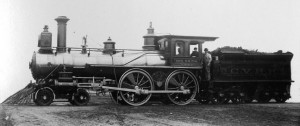 The first steam locomotive arrived in St. Albans in 1850 and the railroad cannot be overstated in the telling of local history. J. Gregory Smith, who was 46 years old in 1864, amassed a fortune by combining the Vermont & Canada Railroad with the Vermont Central Railroad Company. The combined powerhouses became the Central Vermont when Smith brought its headquarters to St. Albans in 1860.
The first steam locomotive arrived in St. Albans in 1850 and the railroad cannot be overstated in the telling of local history. J. Gregory Smith, who was 46 years old in 1864, amassed a fortune by combining the Vermont & Canada Railroad with the Vermont Central Railroad Company. The combined powerhouses became the Central Vermont when Smith brought its headquarters to St. Albans in 1860.
Among the chief concerns of the raiders in 1864 was the potential to alarm the hundreds of railroad workers and mechanics at the St. Albans Foundry Company. They toiled within the few blocks west of the downtown banks.
The foundry company, established in 1840, advertised nationwide, shipping such machinery as threshing machines and silage cutters. It was housed in a building larger than the one that stands there today — two stories covering 280 by 285 feet at the corner of Lake Street and Foundry (today’s Federal Street).
There were shops of all kinds in the village then, the ladies’ millenery, where the only fatality of the raid would take place, Dutcher’s pharmacy, the St. Albans Messenger newspaper office (precursors dated back to 1833), clothing and household stores, carriage and fur retailers, farm suppliers, and a spate of livery stables from which the raiders stole mounts and tack for their escape.
The mundane and simple buildings of the backstreets held no comparison with Civil War Gov. J. Gregory Smith’s mansion, The Towers, located on the upper end of Congress Street. A true marvel of its time, the home was maintained by a bevy of servants, and comprised of 40 rooms, nearly all appointed in the finest woods, marble and furniture. Its opulence was well known by all who lived in the community and by its many notable guests. Among those was President Benjamin Harrison and then, too, the audacious Confederate raid leader, Lt. Bennett Young, who — passing himself off as a ministry student — charmed the state’s first lady into giving him a guided tour.
The Towers, like many other stately homes and downtown landmarks over the years, was to perish in flames. The oldest remaining home from the village’s earliest years is on North Main Street today. The Hoyt House, originally built by Silas Hathaway in 1793 (while George Washington was president), was once a neighbor to the earliest log cabin in the village. A tavern nearby served as a meeting place.
Downtown hotels, such as the American House, Tremont House, and the St. Albans House were important in everyday life in the 1860s as they accommodated visitors, Confederates among them, arriving by rail or carriage.
The Confederates who slipped into town in disguise also were aware of the ongoing construction of the newest such building, The Welden House. Situated just north of Taylor Park it became the largest and most famous hotel in Vermont – 200 rooms within five stories, with an elegant dining room, lavish wood paneling, oak staircases, and horse-drawn coach service to and from the rail station and about town.
Welden construction foreman Elinus J. Morrison, of Manchester, N.H., was seen speaking with a visitor on the work site the day before the raid. Later that visitor was identified as the 21-year-old commander of the raiders. Morrison, some alleged he was a Southern sympathizer, was shot by a Confederate and became the only person to die during the raid. The Welden would open later that same year.
St. Albans at the time of the raid had a population of about 2,000 and as the county seat was the busiest commercial and manufacturing center north of Burlington. Wednesday Oct. 19, 1864, the day following the village’s weekly market day, would be remembered as having started rather sleepily, but even so, there were easily hundreds and hundreds of additional people at work all around the center of raid activity.
Among those, of course, were the officers and employees at the St. Alban, Franklin County, and First National banks. For them, that drizzly and gloomy day was to turn sourer still. It began when the first war whoops were heard in the streets and armed gunmen, vowing no-holds-barred revenge against the North, stormed into their establishments.
The rest, as they say, is history.


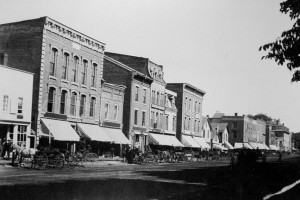
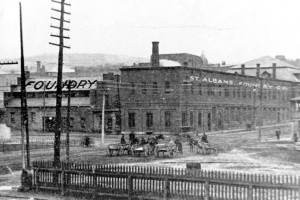
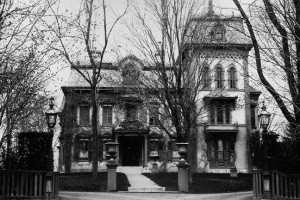
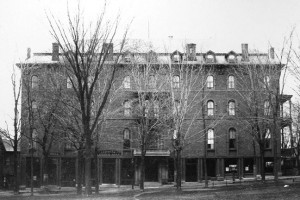


Pingback: The Story Of 21 Confederate Soldiers Who Terrorized A Small Vermont Town 150 Years Ago | Construction